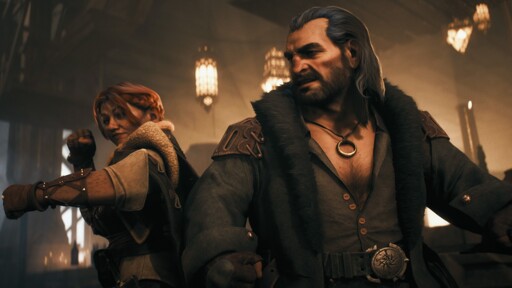I’ve noticed a trend—particularly in some recent RPGs—of, well, let’s call it ‘Netflixiness’.
Dialogue designed to leave absolutely nothing to interpretation, to exposit information in the most direct way possible, devoid of any real character or context. There’s an assumption that any moment the audience spends confused, curious, or out-of-the-loop is a narrative disaster.
I hate to keep knocking Dragon Age: The Veilguard about, especially since I still had a decent time with it all told, but the thing that made me break off from it after 60 hours really was its story. It’s a tale that does get (slightly) better, but it gave me a terrible first impression I never quite shook.



Games with complicated or involved stories just need to go back to having a comprehensive log or journal. That used to be a staple of big games, to the point where it could take you days to read all the lore and journal entires. That might not be fully ideal for those adult gamers either but theres definitely a comfortable middle ground where your active missions page has a little brief for each objective telling you who gave the quest, what they wanted and why. Lots of games these days can have like 20 active quest markers and give you no information about any of them beyond some random npc you talked to once wants 10 of something for some reason.
Talking about lost feature, I feel like like less modern games like to give their players a comprehensive map.
It used to be that map is a basic feature in games that involve any kind of navigation but nowadays some games just…don’t?
I like the way the new wave of CRPGs — Pillars of Eternity, Tyranny, etc. — deals with this problem. Of course you have a journal with a quest log and a lore encyclopedia. In addition to that, if you hover over highlighted words (names, lore things) during dialogue, it shows you a short explanation.
I remember back in the day, when a lot of the time you had to keep your log/journal yourself with pen and paper. Getting back to Lands of Lore after a week without any notes? Might as well start over.
Some games still do encourage that! Have you met a little game called Blue Prince?
I am ashamed to say how long it took me to get the pun in the title for this game.
It’s actually a triple entendre.
Blue Prince
Referring to the protagonist, Simon P. Jones
Blue Prince
Blueprints, which enable the drafting mechanic the game is centered around
Blue Prince
Ilex x meserveae, a species of blue holly of which the male version is called Blue Prince. (referring to Mt. Holly, where the game is set)